MO Tested: Arai Defiant-X Review

X marks the spot.
The chin bar. Quite literally, it’s what defines a full-face helmet. However, in the case of the Arai Defiant-X that we have here, it’s a bit of a departure from the rest of Arai’s full-face lineup. We’ll get into the specifics in a minute, but let’s take a step back and look at where the Defiant falls into line.
Long known as a racer’s helmet company, Arai is well established among the go-fast crowd. But as any financial expert will tell you, it’s best to diversify your assets. It’s that same mentality Arai used as the approach for the Defiant-X. It’s marketed towards, shall we say, non-sportbike riders. It’s own introduction video was targeted specifically at cruiser riders (even though Freddie Spencer features prominently in a non-speaking role…), but riders on naked bikes and touring bikes also apply. And yes, sportbike peeps aren’t excluded, either.
Why is this? It comes back to the chin bar. Take a look at some of the other full-face helmets marketed towards this crowd – mainly the Bell Eliminator and the Simpson Bandit series. Notice a similarity? Unlike the other full-face Arais, the Defiant-X has slits for its chinbar air intakes instead of more traditional vents you can flip open or close. This subtle difference changes the shape of the Defiant’s chinbar compared to its siblings up and down the family tree, for what some might call a cleaner, smoother shape. You can still control the amount of air coming in through the chin vents, of course, only now it’s done with sliding tabs inside the helmet. From here, however, the Defiant-X is every bit the Arai we’re familiar with.
The Arai Philosophy
Clearly, Arai is going after a different customer with the Defiant-X, but in helmets, racing still improves the breed. In this regard, you’ll find lessons used in other Arais spread throughout the Defiant-X.
It may sound silly to focus so much on a chinbar of a helmet, but the Arai philosophy has always been on keeping the helmet’s shape as round as possible to allow it to maintain the “glancing off” effect – a term Arai coined to describe how its shape glances off the ground in a slide, with very little chance of the helmet catching on something that could further hurt the rider.
This brings us to the next point: to fully understand the Defiant-X, it helps to understand how it’s made. If you haven’t already, read Evans’ in-depth look behind the scenes at Arai. Here you’ll see the craftsmanship and handiwork that goes into each helmet. The guiding principle, however, is the R75 shape. This refers to each shell’s continuous curve radius of at least 75mm, with no exaggerated protrusions or sharp angles (protrusions like air intakes and spoilers on top of the helmet are designed to break away in a crash, maintaining the helmet’s shape). Arai applies this curve above the test line SNELL uses for its impact testing, which is basically a circumference line originating from just above the chinbar, going upward.
From here, shells are made by the hands of a certified Arai master technician (read more about these individuals in Evans’ piece above, it really is fascinating) using proprietary fibers Arai says are 30% stronger than fiberglass and six times more expensive. This helps preserve the helmet’s tensile strength. It’s held together with resins developed in-house. Arai’s own AR Mat is a non-woven material for added strength with minimal weight that is then sandwiched with Zylon and two Super Fiber “bird’s nests” to help create the shell. Super Fiber belts then strengthen the shell like the bands of a barrel to fight the effects of cracks wanting to widen during impact.
Next, the one-piece multi-density expanded polystyrene (EPS) liner is also hand made, with varying thicknesses used depending on the impact location – areas commonly struck during impact receive a thicker amount, while less-prone impact zones get a narrower amount. These zones are determined by studying decades worth of crash data and examining where riders get hit the most. Since the EPS is the first point of contact when our head hits the ground, Arai uses soft EPS liners, backed by a strong outer shell.
The Dreaded Arai Shield System
You either love or hate Arai’s shield system. Personally, once you get used to it, it really isn’t too bad. However, it is a little different than most other helmets. Arai places the entire shield mechanism, called the Variable Axis System (VAS) outside the helmet’s shell in order to maintain the R75 shape. Slim side pods then cover the mechanism. Compared to Arai’s previous mechanism, the SAI, the top of the side pods are nearly an inch lower, which also lowers the shield’s pivot. The result is a smoother, rounder shell shape. The eyeport is 10mm wider than before, too.
With the SAI system, shield changing was done mostly blind – and with considerable force. It’s enough to worry first-timers and even skilled veterans. With the VAS system, which all X-series Arai helmets use, once you open the side cover, you can see all the internal pieces, making shield changes far less scary. Just watch the video above to see how easy it is.
Back To The Defiant
Coming back to the Defiant-X, like mentioned at the top, the chin vents are the most obvious difference compared to other Arai helmets. They can open in different stages, allowing full airflow if you wish, or smaller amounts to, say, clear out fog inside your visor – a problem you shouldn’t have to worry about since the shields themselves come with a Pinlock insert.
Less noticeable is an internal ventilation channel located at the base of the eyeport, just ahead of the visor mechanism. These are non-adjustable, but channel air through exhaust vents integrated into the chin bar and out the rear of the helmet.
Up top you’ll find two adjustable air ducts. When open, obviously you’ll get a stream of fresh air coming in. But when closed the ducts act as an exhaust and allow hot air to be pulled through the helmet. At least that’s what Arai says. Could I feel any hot air being pulled? No, but I certainly noticed fresh air coming in when the vents were open.
The airflow streams best when the rear duct (encompassing three holes) is open. A sliding tab opens or closes the gate for the holes and controls the amount of air coming in. When fully open, the top air ducts, rear duct, visor ducts, and the exhaust channels through the chin bar and neckroll do an impressive job of circulating a constant stream of air. There’s a noticeable difference with all the vents closed.
This is all well and good, but the important thing riders want to know is how it fits. To that end, the Defiant-X is meant for intermediate oval head shapes, slotting itself in nicely between the Signet-X, which is meant for long oval head shapes, and the Quantum-X for round oval heads. Personally, I happen to be an intermediate oval head (as are most people). If you fall between different head shapes, the interior padding – which is odor resistant and washable – is available in several different thicknesses (sold separately) to help accommodate a better fit. A clever feature Arai includes is additional padding within both sides of the headliner and within the cheek pads. Remove them and you free up 5mm of interior width, which is hopefully enough to negate the need to buy different pads.
If you’re at all familiar with Arai helmets, then wearing and riding with the Defiant-X will feel instantly recognizable. The padding is soft and plush, yet supportive where you need it. If you’re coming from less expensive helmets and stepping up to an Arai, you’ll feel the difference in the interior as soon as you put it on. From a noise standpoint…I honestly can’t tell you, since I wear earplugs under all my helmets which drowns out nearly everything except the important things like engine noise.
Riding with the Defiant-X, the eyeport is nice and wide. On my particular helmet I had to put in some effort to hear and feel the shield “click” as it locked into place, though this hasn’t been an issue with other Arais I’ve used. On the bright side, the large shield latch system is easy to reach and operate with gloved hands. Lift the latch slightly and the shield will crack open just enough to let in cool air and get rid of the fog. Pop the latch all the way and you can continue the upward motion with your thumb to raise the visor to the top.
As mentioned before, airflow is dependent on whether the vents are open or closed, but no matter what position they’re in, aerodynamically, the Defiant-X is very stable. Even riding the Yamaha MT-07 with its minimal bodywork, my head easily sliced through the wind at highway speeds (which is more than I can say about my chest). Checking over my shoulder for lane changes was simple enough, too.
Final Thoughts
You know a helmet fits well when you don’t even notice it on your ride. For me and my head shape, when I’m wearing the Defiant-X it simply fades away into the background. Granted, I haven’t taken a fall with the helmet, nor do I plan to, but from a safety standpoint, the Defiant-X sacrifices nothing compared to the Corsair-X all of Arai’s MotoGP and World Superbike riders wear. Long story short, it’s a very comfortable helmet inside and out, aimed for the rider with an intermediate-oval head, who wants a clean and simple full-face Arai. Yeah, you’re paying a premium – solid colors start at $660 and go north of $800 for graphics – but as the saying goes, how much is your head worth?
Arai Defiant-X | |
| + ProsVery comfortable (if you have an intermediate oval head)Decent ventilationTypical Arai quality | – ConsChin vents are a little harder to close since the tabs are insideChanging shields can still be intimidating for the uninitiatedPricey for the category |
FAQ
Where are Arai helmets made?
Arai takes pride in the fact all its helmets are made in Japan. With all the helmets made in-house, it allows for exceptional quality control. The trade-off, of course, is a higher price. Not only that but the shells are made by hand by master technicians that spend years apprenticing to develop their skills. It really is a big deal to be promoted to shell maker.
Why are Arai helmets so expensive?
As mentioned, Arai doesn’t outsource its helmet production or use factories in other parts of Asia. Combined with the fact that skilled artisans (read humans) personally have a part in the creation of each helmet – from shell making to the painting process – the extra cost compared to other helmets makes more sense.
What does Arai mean?
It’s the family name. Hirotake Arai founded the company over 60 years ago since there were no helmet manufacturers in Japan at the time. Even today, three generations later, the company is still family-owned.
Arai Defiant-X Specifications | |
|---|---|
| Price | $659.95-$809.95 |
| Sizes | XS-2XL |
| Weight | 3 lbs, 10 oz. |
| Colors | White, Black Frost, Black, Modern Gray, Gun Metallic Frost, Carr Orange Frost, Carr Silver, Outline Black, Outline Red, Diablo Yellow Frost, Diablo Red Frost, Shelby Black, Shelby Red, Dragon, Number Blue, Number White |
Additional Resources
Arai: The Philosophy Behind The Helmets
MO Tested: Arai Regent-X Review
MO Tested: Arai Corsair-X Review
We are committed to finding, researching, and recommending the best products. We earn commissions from purchases you make using the retail links in our product reviews. Learn more about how this works.
Become a Motorcycle.com insider. Get the latest motorcycle news first by subscribing to our newsletter here.

Troy's been riding motorcycles and writing about them since 2006, getting his start at Rider Magazine. From there, he moved to Sport Rider Magazine before finally landing at Motorcycle.com in 2011. A lifelong gearhead who didn't fully immerse himself in motorcycles until his teenage years, Troy's interests have always been in technology, performance, and going fast. Naturally, racing was the perfect avenue to combine all three. Troy has been racing nearly as long as he's been riding and has competed at the AMA national level. He's also won multiple club races throughout the country, culminating in a Utah Sport Bike Association championship in 2011. He has been invited as a guest instructor for the Yamaha Champions Riding School, and when he's not out riding, he's either wrenching on bikes or watching MotoGP.
More by Troy Siahaan




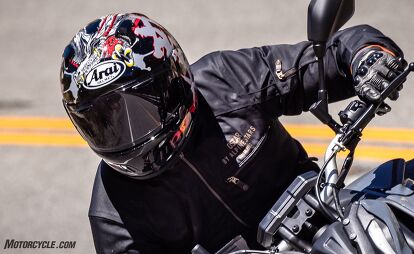






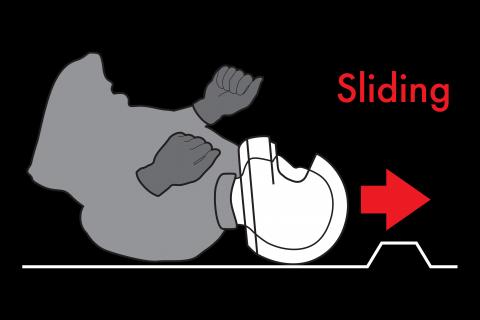

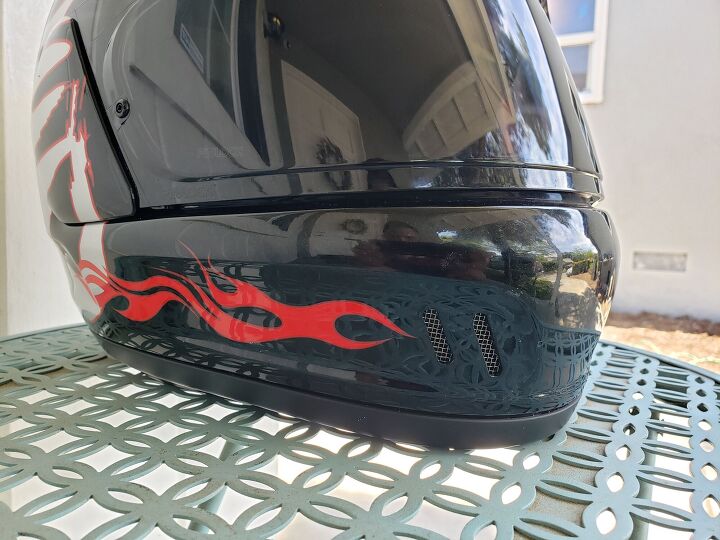










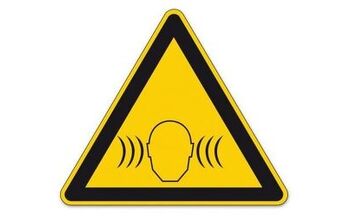

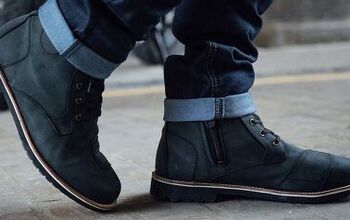















Comments
Join the conversation
I can change a Corsair V visor in the dark with one hand. If you can't figure out an Aria system how do you make coffee in the morning? They have dumbed it down to the point that it now takes longer to do than it used to. Oh well, Merica. LOL
Just picked up a Defiant X helmet in February and took a 3 day 1000 miles mountain trip last week and the helmet is outstanding, quiet, and comfortable. Worth every penny.